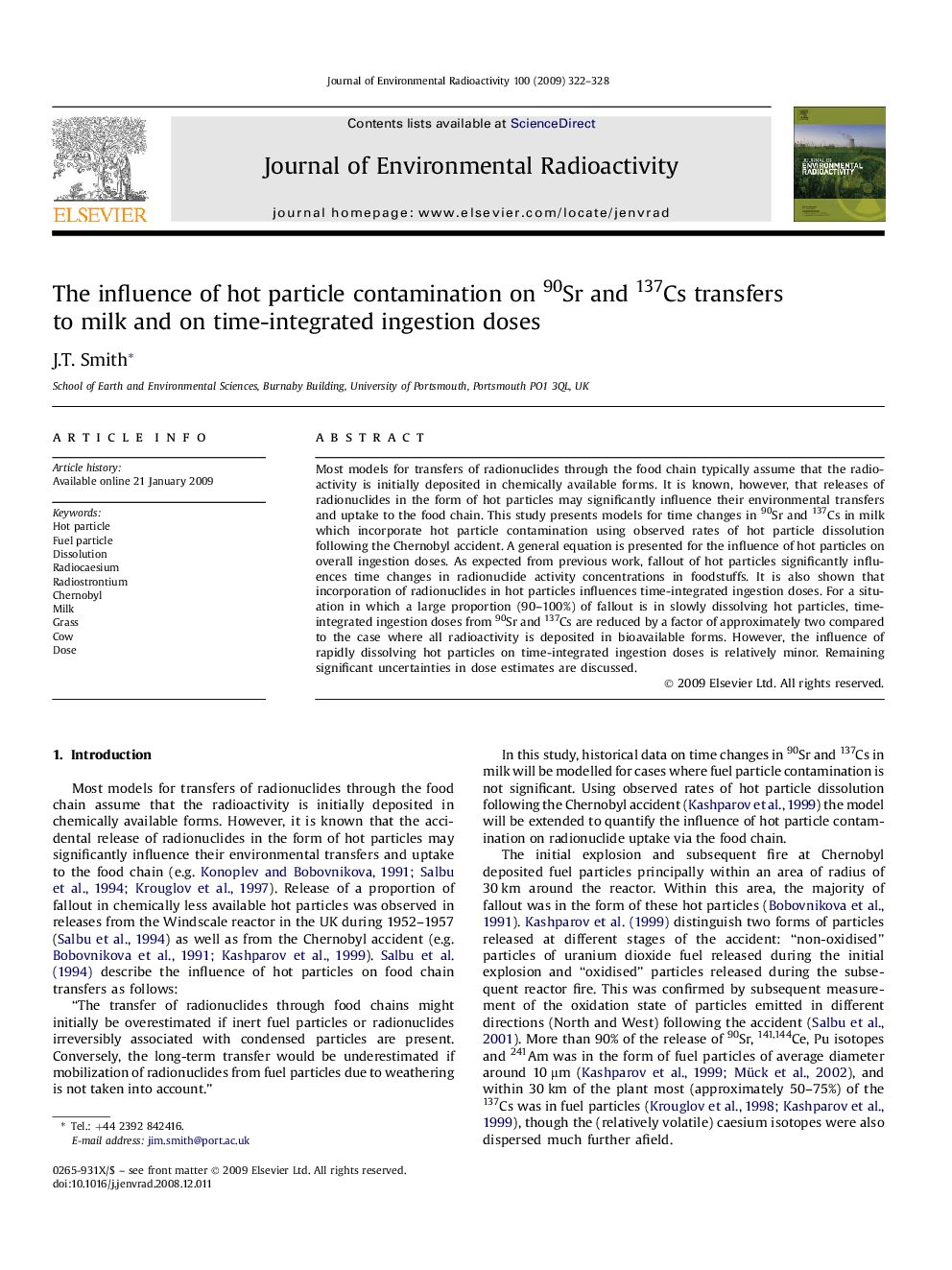| Article ID | Journal | Published Year | Pages | File Type |
|---|---|---|---|---|
| 1738902 | Journal of Environmental Radioactivity | 2009 | 7 Pages |
Abstract
Most models for transfers of radionuclides through the food chain typically assume that the radioactivity is initially deposited in chemically available forms. It is known, however, that releases of radionuclides in the form of hot particles may significantly influence their environmental transfers and uptake to the food chain. This study presents models for time changes in 90Sr and 137Cs in milk which incorporate hot particle contamination using observed rates of hot particle dissolution following the Chernobyl accident. A general equation is presented for the influence of hot particles on overall ingestion doses. As expected from previous work, fallout of hot particles significantly influences time changes in radionuclide activity concentrations in foodstuffs. It is also shown that incorporation of radionuclides in hot particles influences time-integrated ingestion doses. For a situation in which a large proportion (90-100%) of fallout is in slowly dissolving hot particles, time-integrated ingestion doses from 90Sr and 137Cs are reduced by a factor of approximately two compared to the case where all radioactivity is deposited in bioavailable forms. However, the influence of rapidly dissolving hot particles on time-integrated ingestion doses is relatively minor. Remaining significant uncertainties in dose estimates are discussed.
Related Topics
Physical Sciences and Engineering
Energy
Nuclear Energy and Engineering
Authors
J.T. Smith,
